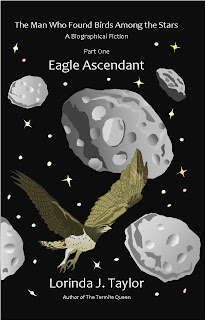99-CENT SPECIAL
ON FIVE TERMITEWRITER BOOKS!
MONDAY, NOVEMBER 5
THROUGH
SUNDAY, NOVEMBER 12
The Termite Queen (a 2-vol. novel)
v.1: The Speaking of the Dead http://amzn.to/Imh3kd
v.2: The Wound That Has No Healing http://amzn.to/LnvhbL
Excerpt from an Amazon review by Jack A. Urquhart
Though the author modestly characterizes TQ as literary Sci-Fi, the description doesn't begin to capture the full flavor of Taylor's accomplishment. Rather, in TQ V 1 and 2 the author serves up a tome that crosses genres as easily as her intergalactic cast of characters crosses from real time space travel to temporal quantum space travel and back again. In fact, the complete TQ saga is part traditional love story, part epic adventure tale richly seasoned with mythic and religious overtones, as well as copious references to literary classics (each chapter is introduced by a literary epigraph). That said, it is not incidental that Taylor's epic is set in the thirtieth century (2969--2971). Hardcore Sci-fi aficionados will appreciate that Taylor's literary recipe includes science so convincingly researched and/or fabricated as to concoct a perfectly plausible and believable future.
It helps that Taylor's `future' is inhabited by a cast of engaging and believable characters--human and alien.
The Man Who Found Birds among the Stars: A Biographical Fiction
Part One: Eagle Ascendant http://amzn.to/2iTNuUd
Part Two: Wounded Eagle http://amzn.to/2rfAaP4
Part Three: Bird of Prey http://amzn.to/2ytDmt8
Excerpts from an Amazon review of Part One by Colleen Chesebro
The date is October 31, 2729, and Robbie Nikalishin comes roaring into a not so perfect world. As a young boy, his father instills a love of space into his young psyche. Robbie’s most prized possession is a tiny metal airplane that accompanies him through his life journey. That aircraft stands for his aspiration to become the captain of his own starship. Gifted with the ability to solve elaborate string theory mathematics, Robbie pursues his dream with a determination that propels him to the head of his college classes.
With expert detail and descriptions, the author immerses the reader into Nikalishin’s futuristic world. This first book covers his childhood and his teen years, eventually bringing you to the peak of his flying career.
What I loved most about Robbie’s character was how utterly human he was. From Robbie’s youth onward, I followed his experiences and saw first hand who Robbie the man became. It was a rare opportunity to witness the events that shaped a character’s personality.
Robbie’s personality is multifaceted, and at times, he comes across as self-sabotaging and selfish. Yet, I couldn’t help but like the guy. For all of his brilliance, he possessed an innocence that tugged at my heart. Sometimes he made his life choices so difficult that I couldn’t help remembering myself at a younger age and how I didn’t make all the best decisions either. However, all of that drama only adds to the allure of Captain Robbie Nikalishin.
I won’t kid you… this book ended with a cliffhanger of phenomenal proportions! Robbie’s story left me hungering for more and turning pages at an abnormally fast pace. I stayed up into the wee hours reading to find out happened next. My only hope is that the author, Lorinda Taylor, writes as quickly as I read. I can’t wait to see how it all comes together in the next book in the series.
With expert detail and descriptions, the author immerses the reader into Nikalishin’s futuristic world. This first book covers his childhood and his teen years, eventually bringing you to the peak of his flying career.
What I loved most about Robbie’s character was how utterly human he was. From Robbie’s youth onward, I followed his experiences and saw first hand who Robbie the man became. It was a rare opportunity to witness the events that shaped a character’s personality.
Robbie’s personality is multifaceted, and at times, he comes across as self-sabotaging and selfish. Yet, I couldn’t help but like the guy. For all of his brilliance, he possessed an innocence that tugged at my heart. Sometimes he made his life choices so difficult that I couldn’t help remembering myself at a younger age and how I didn’t make all the best decisions either. However, all of that drama only adds to the allure of Captain Robbie Nikalishin.
I won’t kid you… this book ended with a cliffhanger of phenomenal proportions! Robbie’s story left me hungering for more and turning pages at an abnormally fast pace. I stayed up into the wee hours reading to find out happened next. My only hope is that the author, Lorinda Taylor, writes as quickly as I read. I can’t wait to see how it all comes together in the next book in the series.
Remember - each volume is only 99 cents, one week only!








